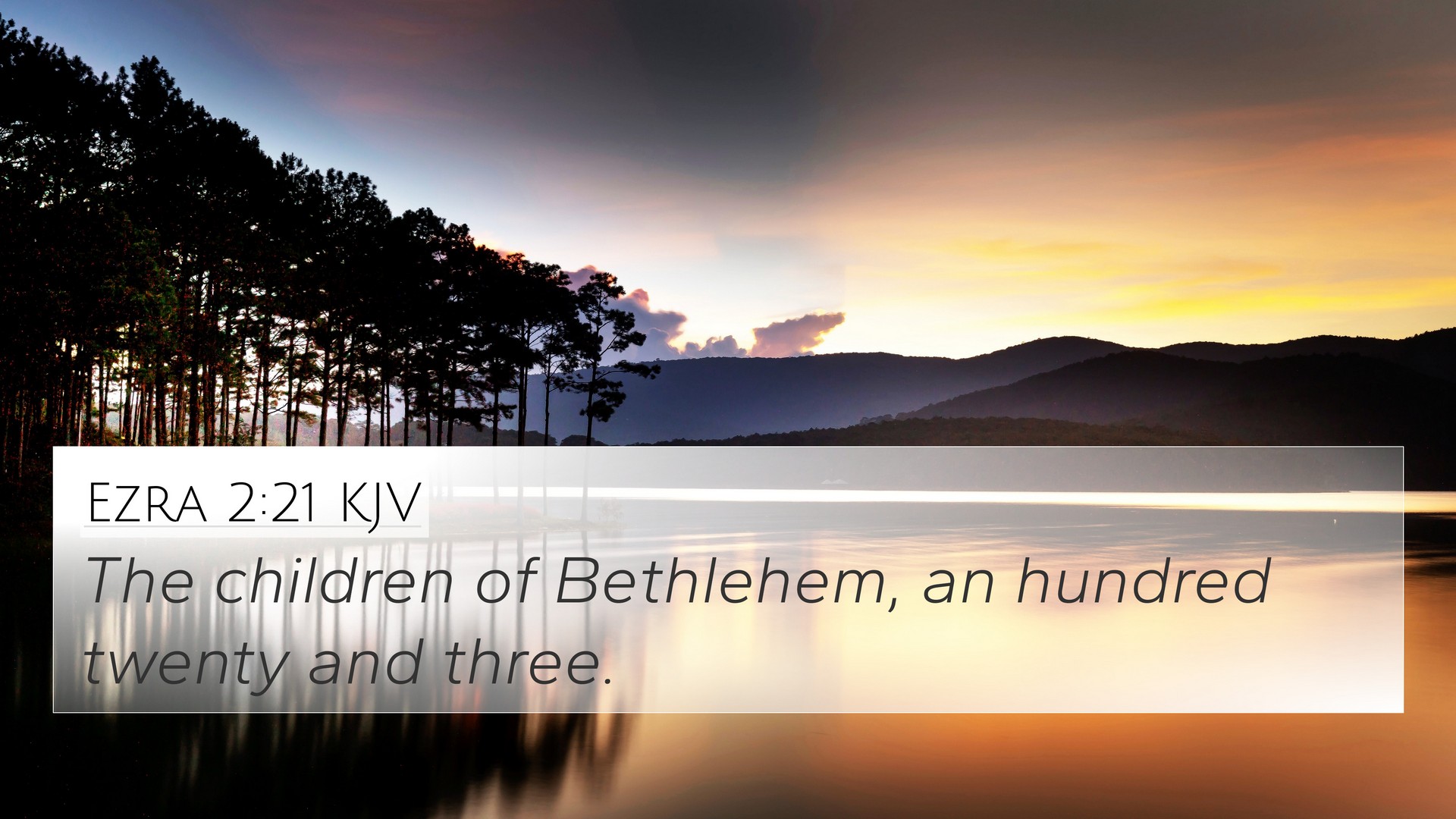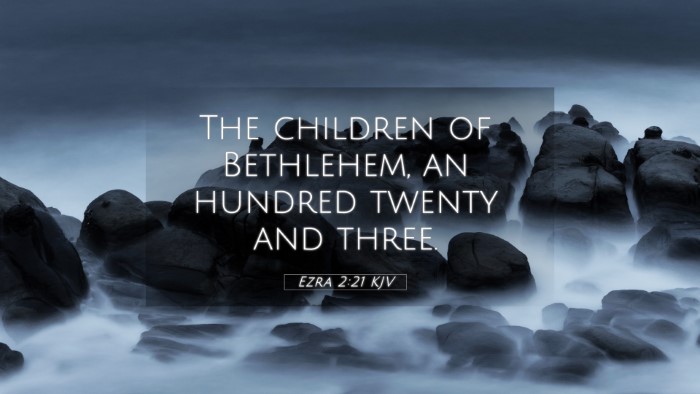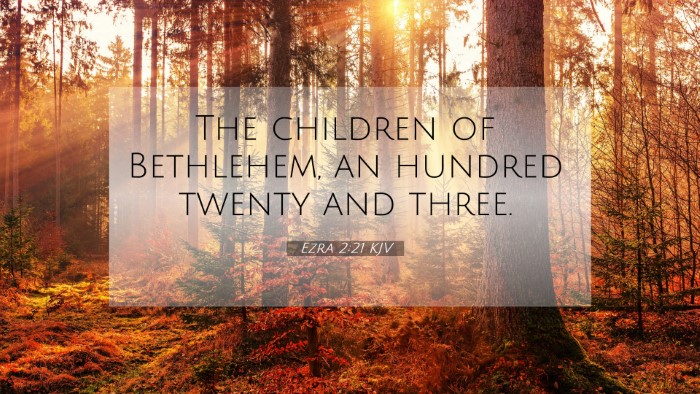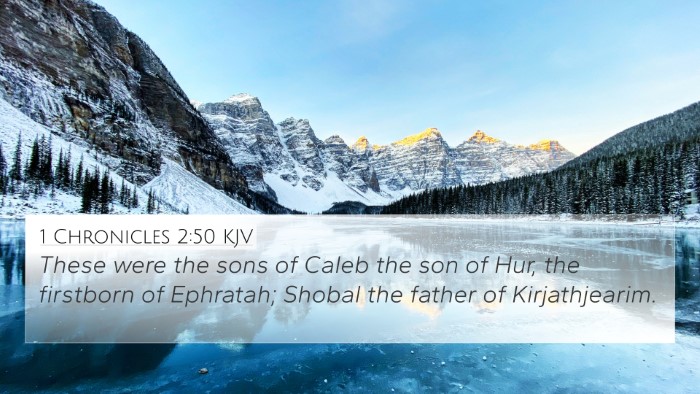Understanding Ezra 2:21
Ezra 2:21 states: "The children of Bethel and Ai, two hundred twenty-three." This brief verse carries historical significance as it outlines one of the returning groups of exiles from Babylon back to Jerusalem, specifically highlighting the descendants from the towns of Bethel and Ai.
Commentary Insights
The insights drawn from esteemed public domain commentaries such as those by Matthew Henry, Albert Barnes, and Adam Clarke provide a deeper theological understanding of this text.
Matthew Henry's Commentary
Matthew Henry notes that the mention of the children of Bethel and Ai underscores the importance of these towns in the history of Israel. Bethel, significant for its ties to Jacob's dream (Genesis 28:10-22), served as a central place of worship. The return of the descendants of these places signifies a renewal of faith and re-establishment of worship in Jerusalem after the Babylonian exile.
Albert Barnes' Notes
Albert Barnes highlights the population count provided in this verse, emphasizing the communal aspect of the return. The number '223' connects with the overall narrative that God is reviving His people. He further explores how the exact numbers may reflect a deliberate record-keeping meant to authenticate the fulfillment of God's promises regarding the return of His exiled people.
Adam Clarke's Commentary
Adam Clarke comments on the historical aspect of Bethel and Ai, noting that these cities hold a significant place in the narratives of the Israelite conquest and early monarchy periods. Clarke emphasizes that this return meant the reconnection of the Jewish people to their heritage and identity in the land that God promised them.
Thematic Connections and Cross-References
The verse in Ezra 2:21 relates to several other scriptures that reflect themes of return, restoration, and identity. Below are some relevant Bible verse cross-references:
- Nehemiah 7:21 - Lists the same inhabitants who returned from exile.
- Joshua 7:2 - Discusses the initial significance of Ai during the conquest of Canaan.
- Genesis 12:8 - Talks about Abraham’s sojourn near Bethel, linking it back to the promise of land.
- 1 Kings 12:29-30 - Mentions Bethel as an important site in the division of the kingdom.
- Isaiah 44:26 - Points to God's promise of restoration and rebuilding.
- Jeremiah 30:3 - Shares God's intention to bring back the people from captivity.
- Zechariah 1:16 - States God's desire to return to Jerusalem and rebuild it.
- Luke 1:68 - The idea of redemption and returning to the heritage showcased through Christ's ministry.
- Romans 11:26 - Connections to the remnant of Israel and God’s faithfulness to His people.
- Revelation 21:2 - The ultimate promise of a new creation where God dwells among His people.
Conclusion: Inter-Biblical Dialogue
In examining Ezra 2:21 through the lens of various commentaries and cross-referencing with other scriptures, one can clearly see the broader narrative of God's faithfulness, His covenant with Israel, and the recurrent theme of restoration throughout the Bible. This verse serves not just as a historical account but as part of a larger dialogue linking past, present, and future within the scriptural canon.
Tools for Bible Cross-Referencing
Utilizing tools for cross-referencing, such as a Bible concordance or a Bible cross-reference guide, can greatly enhance your understanding of scripture links and themes. These resources assist in identifying connections between Old and New Testament passages and offer insights into the intricacies of Biblical narratives.
Applying Cross-Referencing in Study
Being adept in cross-referencing Bible study methods allows for a comprehensive understanding that links various passages thematically. The use of Bible reference resources can facilitate a deeper engagement, encouraging further exploration of how different scriptures speak to one another.
Final Thoughts
Engaging with scripture through the lens of cross-references not only enriches personal study but also assists in sermon preparation, devotional times, and theological discussions. Understanding the context and connections of verses like Ezra 2:21 bridges the gap between historical accounts and life application for contemporary believers.



